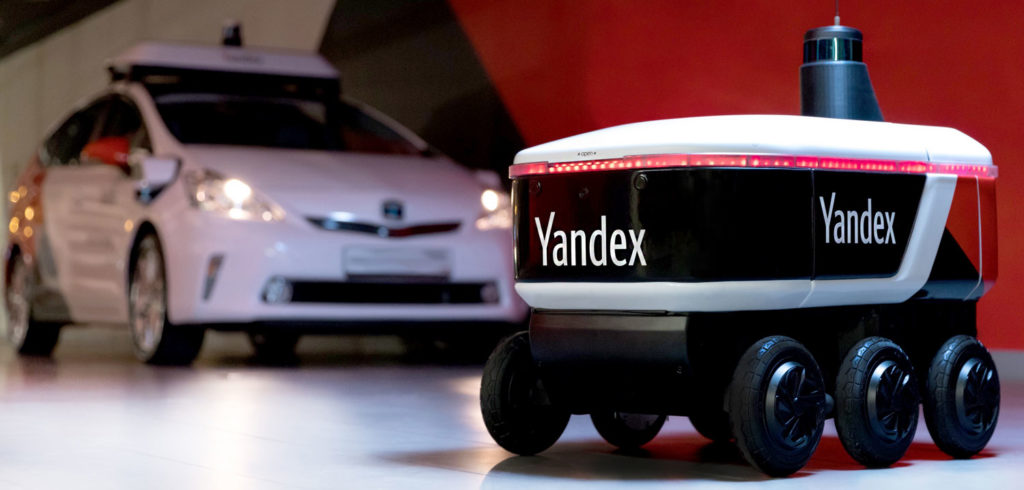Artem Fokin, head of business development for Yandex Self-Driving Cars, explains why last-mile delivery robots are growing in popularity as a concept and will continue to be piloted throughout 2020. With sustained growth in the e-commerce industry, he believes that technology companies will continue testing, eager to improve the landscape for packaged deliveries.
Delivery robots, once a sci-fi fantasy, were seen this year rolling along university campus sidewalks and suburban streets, bringing pizza and packages right to customers’ front doors.
These robots are increasingly seen as a solution for last-mile delivery. This last leg can often be inefficient. And as online shopping becomes the norm for many people, the number of packages being delivered direct to home and businesses has increased. As a result, the delivery landscape needs to adapt distribution processes to ensure it can deliver packages efficiently and on time. Many think robots could provide the solution.
In November 2019, our self-driving team at Yandex launched the Yandex.Rover – a delivery robot that can intelligently and autonomously deliver small packages. Named after the classic lunar exploration vehicle, Rover is the size of a suitcase and navigates sidewalks at the speed of a pedestrian.
Utilizing the same hardware and software behind Yandex’s self-driving cars, Rover has begun transporting small packages around our campus in Moscow. While moving around Yandex’s headquarters, the robot recognizes and safely navigates around pedestrians, pets and any other obstacle.
When we set out to develop our self-driving technology, we envisioned a future of safer and more convenient transportation. As we continue to advance our technology, we’re excited that the Rover contains a self-driving platform with the potential to improve many intelligent products and services within the Yandex ecosystem and beyond.
By their very nature, delivery robots are designed and programmed to transport food, medicines and other packages from one destination to another. Delivery robots are also designed to be autonomous and are integrated with their own cameras, motors and sensors – used to move and guide them.
By testing on our Moscow campus first, we ensure Rover safely operates in challenging conditions, and we will eventually test Rover across the city. We are operating Rover during various weather conditions in both daylight and darkness. Furthermore, the robot can reach its destination in fully autonomous mode, but we monitor its activities with a remote operator. With over 7,000 employees and multiple office buildings, public restaurants and parking garages on our main campus, Yandex HQ is an excellent testing ground for this project.
Undoubtedly, the recent advancements in technology over the past five years is really driving the growth of delivery robots to market. The enhanced consumer experience over the last mile of delivery, in comparison to existing modes, is also a challenge we are relishing as the makers of these autonomous delivery robots.
The rise of e-commerce as an industry is also fueling the necessity to look at how deliveries can be made simpler and more economical. And society’s need to look after those house-bound individuals – whether they be new parents with babies, or the elderly – autonomous delivery robots can certainly bring essential supplies to those who need them the most.
There is great potential for the delivery robot to help millions of users to more easily navigate the online and off-line world. We don’t think the road ends there either – we believe many other companies will benefit from using autonomous delivery robots for a range of shipping and delivery needs. We therefore look forward to 2020 with anticipation!


